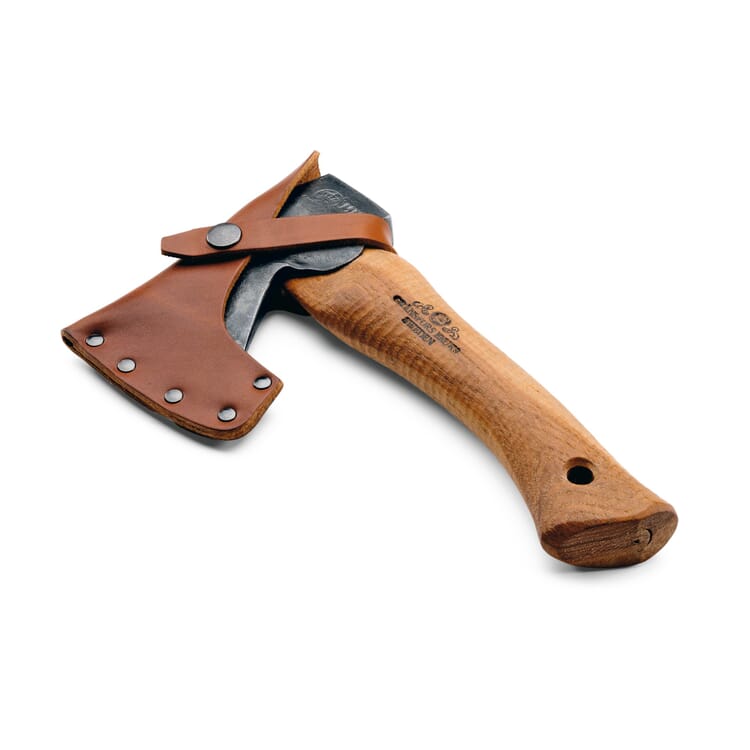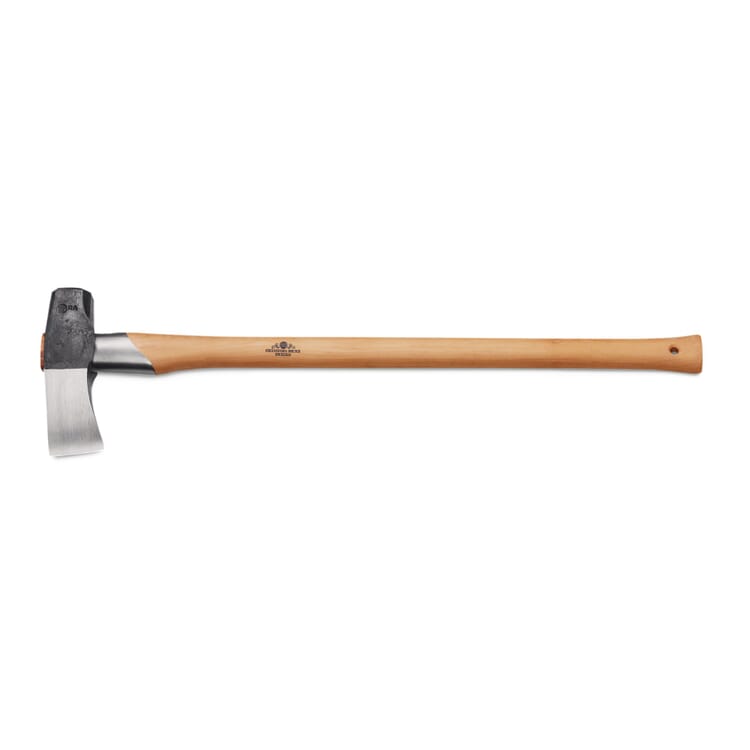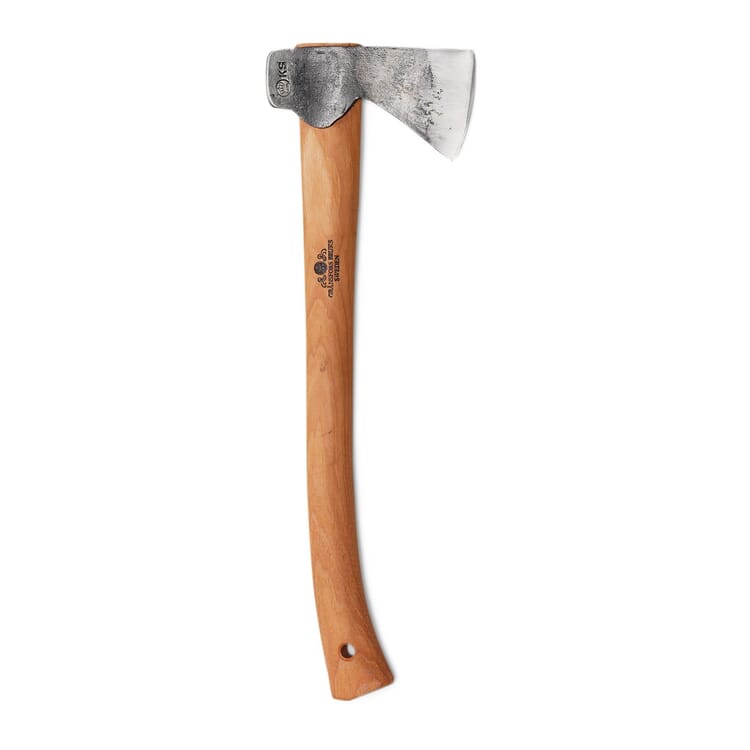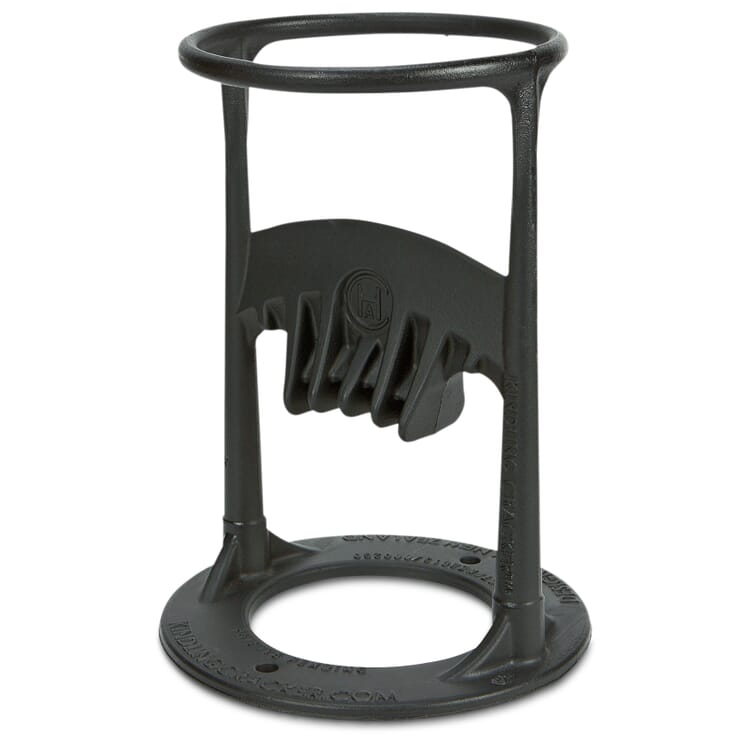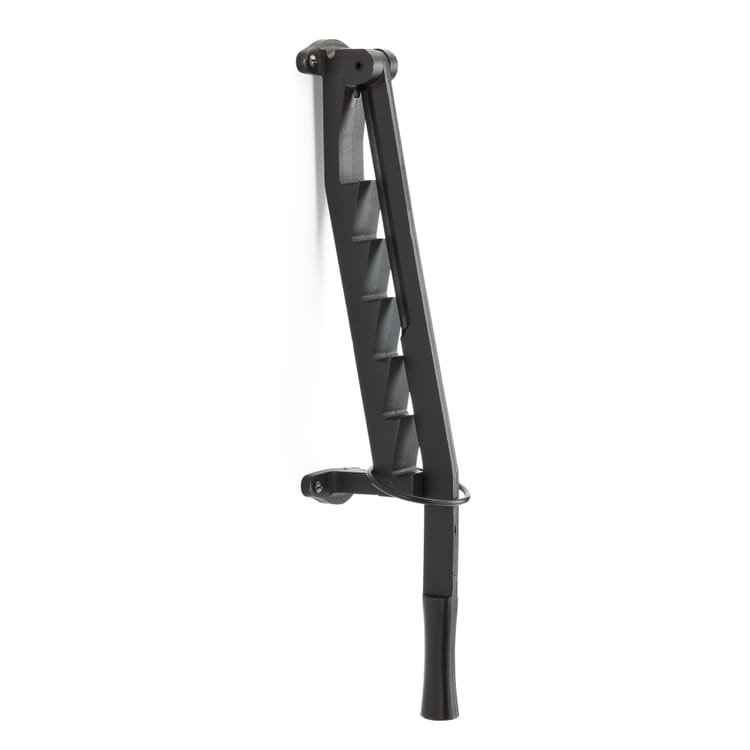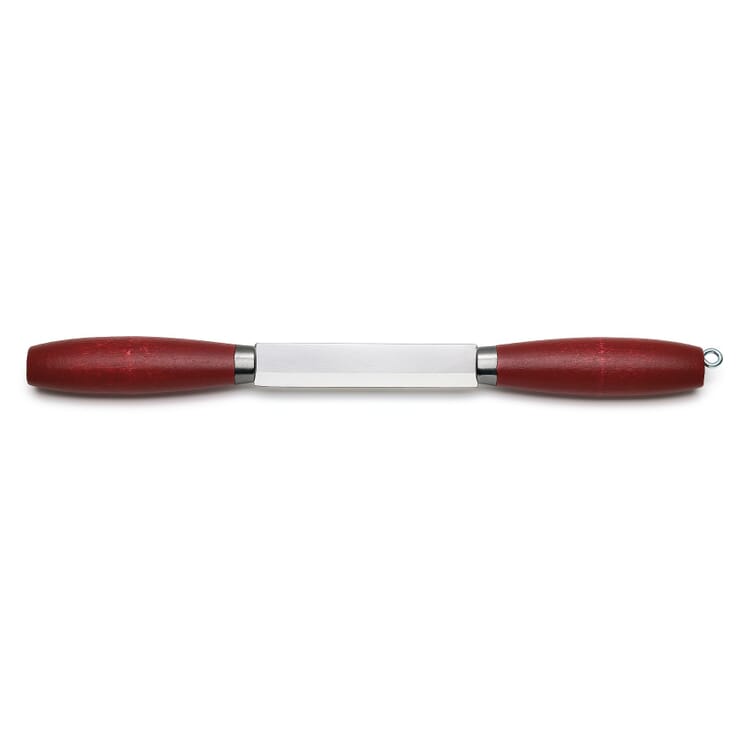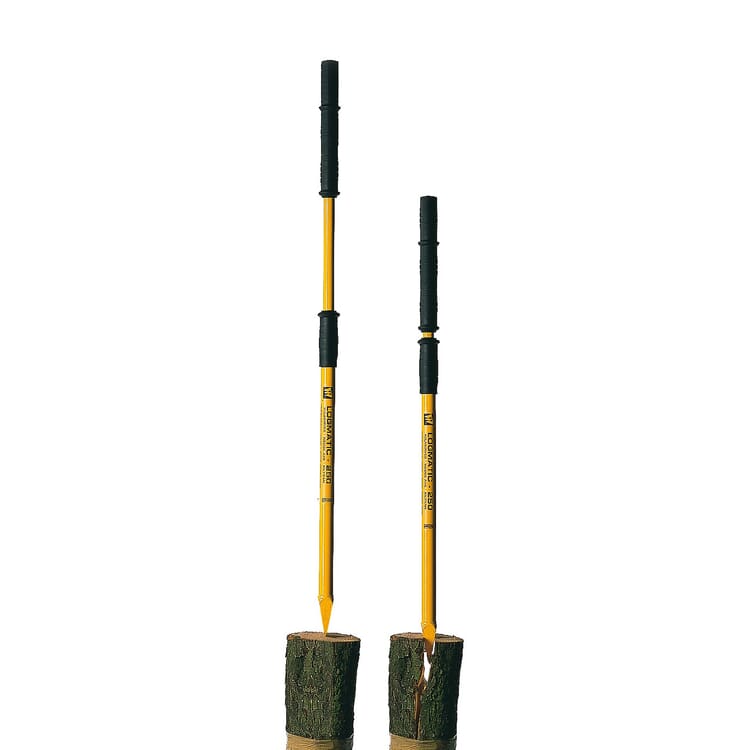Manufacturer
Gränsfors Bruks. Proud forge
"The axe in the house replaces the Zimmermann", once said Schiller's Wilhelm Tell. So far, so true - at least if you've picked the right axe. The traditional company Gränsfors Bruks from rural Sweden proves that not all axes are the same. A Zimmermann would be wise to choose a different model than someone who wants to split wood, or even plans to cut down trees. But it is not only in terms of the intended use that the buyer is confronted with significant differences. Above all, the handmade production of the axes in time-consuming manufacture, which eliminates many processing steps of industrial production and characterizes the peculiar beauty of the tools, distinguishes Gränsfors from its competitors.
Tool for cleavers. Gränsfors at Manufactum
From the wide range of Gränsfors axes, we at Manufactum have selected four models intended primarily for use in the forest and for splitting wood. The hunter's axe was originally designed for stripping the hide from hunted prey, but just like the hand axe, it is also suitable for felling and limbing smaller trees. The splitting axe and splitting hammer, on the other hand, are made for chopping along the fibers of wood - their concave-wedge-shaped cutting geometry splits wood particularly effectively by quickly penetrating and pushing it apart. Each axe is accompanied at the time of purchase by a small "Book of Axes" - a compendium of Gränsfors Bruks' knowledge, so to speak, which not only provides the buyer with information on the differences and areas of application of the various axe models, but also includes important tips on care. And because the people behind Gränsfors Bruks are convinced of their products and their durability, they give a 20-year warranty on every axe. That's something to be proud of.
Bloody Axe. The ups and downs of demand
The great demand led the axe manufacturers - including Gränsfors Bruks - to mass production quite quickly, and the originally handcrafted one-offs gradually became more and more standardized mass products. After the first big boom, things sometimes went down, sometimes went up again, but the biggest changes did not begin until the 1960s. At first, the triumph of the chainsaw in the woodworking industry put axe factories to the test, and only the decline of competing blacksmiths saved some companies, like the one in Gränsfors, through the lean period. The oil crises of the 1970s caused the mood to change. Demand for axes virtually exploded, and by now at the latest the remaining companies were streamlining their operations, automating processes and introducing piecework. The goal was to produce as many axes as possible in as short a time as possible. It is not surprising that this did little to improve the quality of the products. By the beginning of the 1980s and the end of the oil crises, at the latest, the renewed boom in axes was history, and the export market had long since been in the hands of cheaper competitors from Asia and America. Gränsfors Bruks was at a crossroads.
A small village in Sweden. Gränsfors and the axes
Gränsfors - a village in Sweden, four hours north of Stockholm, a winding river, vast fields and forests, classic red wooden houses, and the closer you get, the more clearly you perceive the rhythmic beats emanating from the forge at the heart of the village. More than a century after the company was founded, Gränsfors Bruks - which means "Gränsfors Works" - is still deeply rooted in its namesake place of origin. And this despite the fact that the history of the axe manufacturer is marked by fundamental changes. In the second half of the 19th century, the heyday of logging began in northern Sweden, which brought with it an enormous demand for axes. From 1868 onwards, two local scythe smiths were engaged in the production of the sought-after wooden tools, and in 1902 one of them laid the foundations for a forge dedicated exclusively to the production of axes - the birth of Gränsfors Bruks.
The blacksmith of his fortune. The change of Gränsfors Bruks
A reorientation at the end of the 1980s laid the foundation for the principles that today represent the unique selling proposition of Gränsfors Bruks and have led to the company not only recovering, but also to the name Gränsfors now being a byword for well-shaped tools around the globe. The company took not just one, but several steps back and established a production characterized by lovingly and elaborately handcrafted tools, as was the case a very long time ago.
Precise handwork. High quality axes
Every single axe from Gränsfors Bruks passes through the expert hands of at least four employees, who have refined every step of the process from forging and grinding to scouring and honing, and finally to the handle, to such an extent that extensive post-processing has simply become superfluous. Pride in a job well done goes so far that every Gränsfors axe head bears the initials of the blacksmith. Environmentally harmful varnishes, solvents and glues are also a thing of the past at Gränsfors Bruks - the hickory handles are traditionally fastened with a wooden wedge, and a concealing treatment of the steel and wood surfaces has not only become dispensable due to the quality of the workmanship, it would only unnecessarily conceal the original beauty of the products.
At Gränsfors Bruks, collecting lost knowledge about axes and their areas of application is now considered a basic prerequisite for improved new developments - a concern to which not only the company's own axe museum with over 2,000 specimens of the most varied ages and functions bears witness. Also the broad assortment, which covers altogether over thirty highly functional models from the ranges forestry axes, splitting axes, log house building and Zimmermannswerkzeuge, double axes and historical axes, shows: Choosing the right axe should not be done in passing. Each of the tools is designed for small-scale use and for very specific applications.



